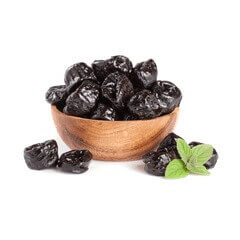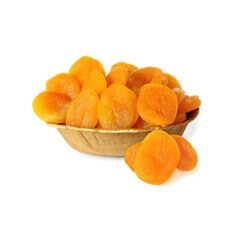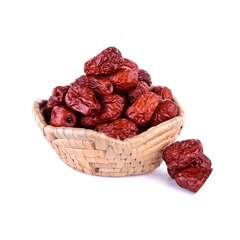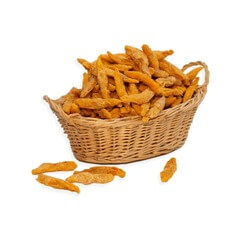In recent years, we have heard a lot about quinoa and its benefits. But is it really better than white rice? Should we replace all dishes containing rice with quinoa?
Comparison: Quinoa or White Rice?
White rice has always been one of the most consumed foods in the world. But for the past ten years, another starch has overshadowed it: quinoa. Both are similar in texture and appearance. In addition, they are essential starches in our diet.
But while white rice and quinoa have a lot in common, they do have some nutritional differences.
Quinoa Vs. Rice: Who Will Win Consumers’ Hearts?
What is quinoa?
Botanically, quinoa is a herbaceous plant of the Chenopodiaceae family or leafy vegetables such as spinach and beets. Although it has the same texture as rice, it is not a grain but a pseudo-grain-like buckwheat. However, like rice, quinoa is a starch.
Also called the rice of Peru or small rice of Peru, quinoa has been cultivated for 7000 years in the Andes and consumed by the local population for its many nutritional properties. Indeed, very hardy, quinoa grows up to 4,200 meters above sea level and in extreme conditions. There are several varieties of quinoa (white, red, pink, orange, purple and black), but white-grain quinoa is the most common. It is its pearl-shaped, ivory-coloured seed that is eaten.
Quinoa: How Does It Taste?
The variety of quinoa that we consume is quinoa real with white grains after washing (this step is essential to rid quinoa of saponins, molecules with a bitter taste that protect it). This one has a delicate, slightly earthy, nutty taste. To give it more flavour, you can, for example, replace the cooking water with broth. Quinoa has this ability to absorb flavours.
Red or black quinoa has a stronger taste.
How to Cook Quinoa?
In fact, quinoa is cooked exactly the same way as rice. However, for successful cooking, it is better to follow the dosages to the letter. The ideal is 1 cup of quinoa for a cup and a half of water.
Start by washing the quinoa seeds. This step is essential to rid quinoa of saponin, a bitter-tasting molecule that protects it. Washing is done in two stages. First, in a fine sieve for a few minutes, mixing with your hands, then under running water for a few seconds.
Then put a pot of water on the fire. When it simmers, dip your quinoa grains in it and cook for 15 minutes without a lid. The quinoa will be crunchy and tender at the same time. Be careful if the water boils before you add your quinoa grains; they may have a sticky and pasty texture.
Finally, drain the quinoa. Normally, this step is unnecessary if the quinoa is organic and of high quality.
Be aware that some recipes call for overcooking quinoa. This is the case with quinoa risotto or even falafel. In this case, cover the preparation. In addition, it is also possible to cook quinoa in the oven at 180°C for at least 50 minutes in 3 to 4 times its volume of water.
Quinoa can compose your savoury and sweet dishes. Moreover, you will find many recipes on the internet. Most often, it replaces rice, pasta and semolina, but you can mix it into a salad or into stews and soups. You can also invent your own dishes. The only limit will be your imagination.
The Benefits of Quinoa
Quinoa is a very rich food. It is made up of 70% carbohydrates and 15% protein. It contains the nine essential amino acids, fibres, vitamins B (B1, B2, B3, B9 and B12), C and E, minerals and trace elements such as manganese, iron, potassium, copper, and calcium. But, above all, quinoa contains good fatty acids, including omega 3.
Due to its nutritional composition, quinoa has many health benefits.
Thus, thanks to its high fibre content, quinoa is good for transit and prevents cardiovascular disease, diabetes and certain cancers. Furthermore, it also regulates the level of glucose, insulin and cholesterol in the blood.
In addition, iron and vitamin B12 contained in iron can fight against anemia. As for manganese, it helps prevent damage caused by free radicals and facilitates certain metabolic processes.
Additionally, quinoa is a powerful antioxidant. As such, it prevents bone demineralization and keeps blood vessels healthy. In addition, since quinoa is a complete protein food, it promotes the feeling of satiety. Moreover, quinoa is recommended by nutritionists in slimming diets. What’s more, it contains far fewer calories than white rice (116 calories per 100g).
Finally, another property of quinoa is that it is gluten-free. It is, therefore, the perfect food for people who are intolerant or who suffer from celiac disease.
White Rice: Zoom On This Food
White rice is a variety of rice. It is a cereal from the Poaceae family. Native to South America, Africa and Asia, it has been cultivated for millennia. Moreover, white rice is the staple food of nearly half of the world’s population.
Unlike brown rice, white rice is husked and polished to remove germs and bran. Thus, it keeps better. However, this process removes a good part of its vitamins and minerals. Nevertheless, white rice remains a healthy food.
The Taste of White Rice
White rice has a neutral taste. It is for this reason that it is more popular (especially with children) than brown rice, which has a more pronounced flavour.
How to Cook White Rice?
Cooking white rice is very easy. You need one cup of rice for two cups of water. For details, put the water and rice in a saucepan and stir. Then put the pan on high heat. When the water evaporates, lower the heat to low and cover the pan. Then cook for 15 to 20 minutes. Finally, remove from heat. It’s ready. Your rice will not be sticky or mushy.
White rice is a versatile food that goes well with both steamed vegetables and meat dishes. Moreover, it is perfect for Cantonese rice; on the other hand, I prefer another variety of rice for the risotto, in this case, the Italian Arborio.
What Are The Benefits Of White Rice?
Food rich in carbohydrates, proteins, fibres, vitamins, minerals and trace elements, white rice has many health benefits. In effect:
- It prevents cardiovascular diseases, certain cancers and all the damage caused by free radicals.
- It contributes to dental health and to the strengthening of the immune system.
- As a powerful antioxidant, white rice regulates blood cholesterol levels.
- White rice, like brown rice, is low in calories. Thus, it is recommended for people who do not want to gain weight.
- In addition, white rice is a gluten-free food.
To enjoy all the benefits of white rice, prefer organic white rice.
Visit the ADNOOR website for the best long-grain rice, golden Sella basmati rice, brown rice, white rice, Super Kernel Basmati Rice, nuts, seeds, and dried fruits. We take pride in saying that we are the Best Basmati rice suppliers in GTA and have been the importers, exporters, wholesalers, distributors, and co-packers of various nuts and grains in Canada for the last 25 years. We aim to provide our customers with quality products, so they keep trusting us. So without wasting time, visit our website and order what you need.







